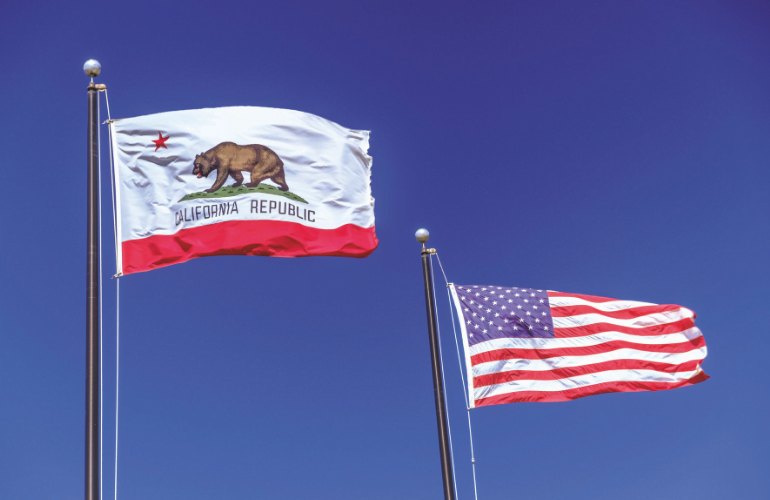Almost a year after the first proposed NEM 3.0 decision sent the state’s solar industry into turmoil, the California Public Utilities Commission (CPUC) has released a new version. Today’s proposal includes a transition to net billing, a glide path to slowly transition to the new plan and non-bypassable charges.
NOT 3.0 history
The CPUC’s initial proposed decision in 2021 includes a shift from net metering to net billing, which allows the dollar value of credits to be set at a different level than the price of energy imports; a Grid Participation Charge for solar customers and a long-term Market Transition Credit to encourage savings paired with solar systems. Wood Mackenzie predicted that the initial proposal would cut California’s residential solar market in half by 2024.
The initial proposed decision was put on hold for an indefinite amount of time after intense backlash and public disapproval from Governor Newsom. In spring 2022, the CPUC reopened the record under new leadership.
2022 NOT a 3.0 proposal
The new proposed decision released on Nov. 10, 2022, also includes the transition to net billing, a glide path to slowly transition to the new plan and non-bypassable charges.
The new Retail Export Compensation Rates that make up the net billing plan will be based on hourly Avoided Cost Calculator values averaged over the days of a month, differentiated by weekdays and weekends/holidays , according to the commission. The decision was made based on the cost of the solar set at $3.30/W. The commission expects the new plan to result in a nine-year payback period for standalone solar.
The five-year glide path is in the form of an Avoided Cost Calculator adder that varies among California utilities. “ACC Plus” adders will remain constant for a customer for nine years from the date of interconnection. The adder will decrease by 20% every year until it reaches zero.

The CPUC said SDG&E customers were excluded from the adder because their solar systems would generate additional bill savings due to SDG&E’s higher electricity prices.
The program also includes four non-bypassable charges. Those fees are: the public purpose program fee, nuclear decommissioning fee, competitive transition fee and the Wildfire Fund Non-Bypassable Fee.
The NEM 2.0 Sunset Period begins with the adoption of this decision, which is expected to take place in December. Customers who submit a complete interconnection application before the end of the Sunset Period will be considered eligible for the current NEM 2.0 tariff. According to the text of the decision, the commission will implement the NEM 2.0 sunset tariff marking the end of the Sunset Period no later than 120 days after the adoption of this decision, in which case no additional customers are allowed to get the service under the NEM 2.0 tariff.
NEM 1.0 and 2.0 customers will remain under their programs unchanged.
The California Solar & Storage Association (CALSSA) previously said it will evaluate the new proposed decision based on whether it imposes any discrimination on the solar tax, affecting the solar economy for the middle and working class households, hinder the state’s clean energy goals and more. The group issued a response on Thursday saying that although it did not include any “solar taxes,” several changes should be made to the decision, as solar may not be affordable. by reducing the credits consumers receive for contributing their excess solar energy. back to the power grid, known as export rates.
“The solar industry and clean energy advocates are still reviewing the CPUC’s proposed decision, but based on an initial analysis, it would cut California’s average export rate from $0.30 per kilowatt to $0.08 per kilowatt and will make those cuts effective in April 2023, resulting in a 75% reduction in the value of exports,” CALSSA said in a release.
“The CPUC’s new proposed decision is really damaging. It needs more work or it will replace the solar tax with a steep decline in solar. The immediate 75% reduction in net energy metering credits is not will support a growing solar market in California,” said Bernadette Del Chiaro, executive director of CALSSA, in an emailed statement.
“If passed, the CPUC proposal would protect utility monopolies and maximize their profits, while making solar less affordable and delaying the goal of 100% clean energy. California needs more solar power and more solar-charged batteries, not less. We urge Governor Newsom and the CPUC to make more changes to help more middle- and working-class consumers as well as schools and farms access affordable, reliable, clean energy ,” he continued.
The CPUC will hear oral arguments from all stakeholders in the form of two- to three-minute presentations at a remote meeting on November 16. from 10 am to 12 pm PT. Viewers can sign up to watch the arguments HERE.
Read the full proposed decision here. Visit the NEM Revisit webpage here.
Updated with CALSSA response at 2:34 pm ET
